Forget-Me-Not Plants - Information On Growing Forget-Me-Nots
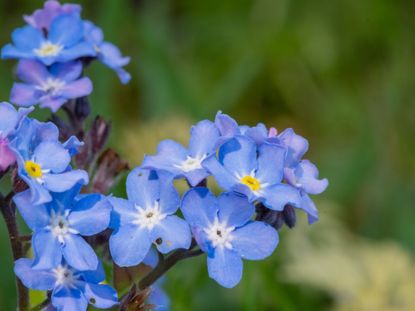

Long revered for their sentimental value and symbolism, forget-me-nots are among the most recognizable garden flowers. So much so that the common name “forget-me-not” is often used to refer to one of several species of Myosotis plant.
While some forget-me-not plants are a much-welcome addition to the home garden, others have a reputation for their aggressive and invasive growth habit. Learning more about each type of forget-me-not will be key in making certain that flower beds are not overrun with unwanted invasives. Myosotis scorpioides, also known as “true” forget-me-not, is of special concern.
Quick Facts about Forget-Me-Nots
Botanical name - Myosotis scorpioides
Height - 6-12 inches (15-30 cm)
Spread - 6-12 inches (15-30 cm)
Sun exposure - Full Sun, Part Shade
Soil requirements - Neutral, Wet
Gardening tips, videos, info and more delivered right to your inbox!
Sign up for the Gardening Know How newsletter today and receive a free download of our DIY eBook "Bring Your Garden Indoors: 13 DIY Projects For Fall And Winter".
Hardiness zones - USDA Zones 5-9
When to plant - Spring, Fall
Recognizing The Forget-Me-Not Flower
The true forget-me-not flower (Myosotis scorpioides) grows on tall, hairy stems which sometimes reach 2 feet (61 cm) in height. Charming, five-petaled, blue blooms with yellow centers explode from the stems from May through October. Flower petals are sometimes pink. Forget-me-not plants often grow near brooks and streams and other bodies of water, which offer the high humidity and moisture that is desirable to this species.
The perennial forget-me-not flower spreads easily, freely self-seeding for more of the wildflower to grow and bloom in shady spots where the tiny seeds may fall. Forget-me-not flower care is minimal, as with most wildflowers. Forget-me-not plants grow best in a damp, shady area, but can adapt to full sun.
Is Forget-Me-Not Invasive?
Determining whether forget-me-nots should be planted in the garden will depend upon where you live. The flowers are native to Europe and Asia, but have become so naturalized in the United States that people sometimes mistake them for native. They are anything but, however, and throughout much of the midwestern and southern United States, true forget-me-nots pose a great threat to both the backyard and local ecosystem.
Though many have labeled this non-native as an invasive, it has also been earmarked as a potential noxious weed. Noxious weeds are those which have been deemed as harmful or detrimental to natural habitats. Because of this, forget-me-not flower care will likely include removing these plants from unwanted spaces.
If you're looking for a safe alternative in the myosotis genus, try the Alpine forget-me-not (Myosotis alpestris). This plant has similar delicate blue flowers to its invasive cousin, but it is native to western North America, and is actually the state flower of Alaska.
Forget-Me-Not Care
If you absolutely must grow forget-me-nots, here are their care requirements.
Water & Light Requirements
When it comes to water, forget-me-not plants will prefer wetter-than-average soil. In fact, this species is known to thrive in soils which are muddy or remain waterlogged for extended periods of time. They are most often found growing near streams, or at the edge of ponds and other bodies of water.
Though the plants are able to survive in full sun, Myosotis scorpioides will grow best in shaded locations where they are able to receive dappled light, or are sheltered throughout the hottest parts of the afternoon.
The specimen is excellent for naturalizing a shady, woodland area. This location allows for the shade and moisture retention needed for optimum performance. Of course, if you have a shady pond or bog area in need of landscaping, this moisture-loving flower will do well there.
Propagating Forget-Me-Nots
In most instances, propagation by gardeners is not required in order for this plant to multiply. Forget-me-nots from seed are known to germinate readily, without additional care from gardeners. This self-sowing habit aids in the plant’s ability to spread rapidly throughout the garden, and ultimately, escape cultivation.
Forget-me-nots are also able to spread by the rooting of plant stolons, as well as their rhizomes. It is suggested that those who wish to grow true forget-me-not do so in containers, making certain to prevent the production and spread of seed.
Problems Growing Forget-Me-Nots
As noted, the invasive nature of this plant is especially problematic. It is not uncommon for forget-me-not leaves and stems to overtake established plantings of perennials. Native flora may also be in danger, as tangled masses of the plant form dense mats. Once established, large colonies of the plant can be immensely difficult to control.
In terms of disease, forget-me-not plants are considered to be quite robust. However, growers have reported consistent issues with common foliar diseases. Among these are mildew and rust, which may drastically decrease the overall ornamental value of the plant.

Becca Badgett was a regular contributor to Gardening Know How for ten years. Co-author of the book How to Grow an EMERGENCY Garden, Becca specializes in succulent and cactus gardening.
- Tonya BarnettWriter
-
 Elegant Exotics: 8 Beautiful Amaryllis Varieties That Will Brighten Any Holiday Display
Elegant Exotics: 8 Beautiful Amaryllis Varieties That Will Brighten Any Holiday DisplayWhether red, pink, white or variegated, the right amaryllis varieties can enhance any living space, especially during the holidays. We round up eight of the most exquisite
By Bonnie L. Grant
-
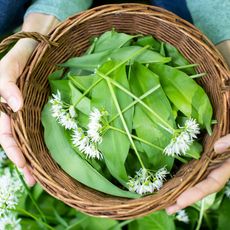 Forage For Herbs: 7 Tasty And Safe Wild Herbs To Pick Close To Your Own Backyard
Forage For Herbs: 7 Tasty And Safe Wild Herbs To Pick Close To Your Own BackyardIn addition to growing your own herbal staples, did you know there are several wild options out there that are safe and tasty – and free? Try foraging these 7 wild herbs
By Amy Grant
-
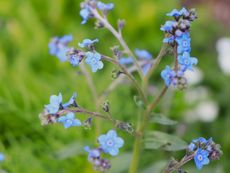 Chinese Forget-Me-Not Care And Characteristics
Chinese Forget-Me-Not Care And CharacteristicsChinese forget-me-nots make beautiful accents in the garden, but they can be invasive. Learn more about this pretty little plant.
By Mary Ellen Ellis
-
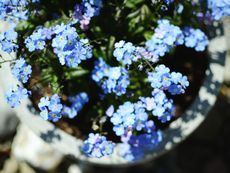 Forget-Me-Nots As A Houseplant – Growing Forget-Me-Nots Inside
Forget-Me-Nots As A Houseplant – Growing Forget-Me-Nots InsideIt is definitely possible to grow forget-me-nots as a houseplant, either during the winter or year round. Click this article to learn how.
By Mary H. Dyer
-
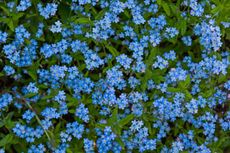 My Forget-Me-Nots Won’t Bloom: How To Fix A Forget-Me-Not With No Flowers
My Forget-Me-Nots Won’t Bloom: How To Fix A Forget-Me-Not With No FlowersForget-me-nots are iconic flowers in the garden and easy enough for even the beginning gardener to see a lot of success in a short time. Unfortunately, they can also be fussy if they're too far out of their comfort zone and may refuse to flower. Click here to learn more.
By Kristi Waterworth
-
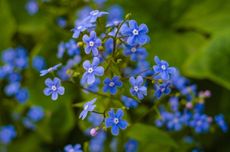 Forget-Me-Not Troubles: Problems With Forget-Me-Nots In Gardens
Forget-Me-Not Troubles: Problems With Forget-Me-Nots In GardensGrowing forget-me-nots can be a walk in the park if you know what signs of danger to be on the lookout for. Even though these plants have few problems, there's always a risk of fungal disease or insect pests, so use this article for help with common forget-me-not problems.
By Kristi Waterworth
-
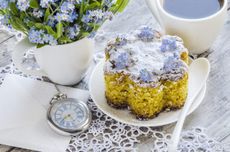 Are Forget-Me-Nots Edible: Tips For Eating Forget-Me-Not Flowers
Are Forget-Me-Nots Edible: Tips For Eating Forget-Me-Not FlowersDo you have forget-me-nots in your landscape? Have you ever wondered "Can I eat forget-me-nots?". After all, there are sometimes hundreds of the plants, or at least there are in my yard. Click this article to find out if forget-me-nots are edible.
By Amy Grant
-
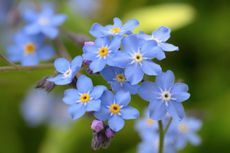 Dividing Forget-Me-Nots: Should Forget-Me-Nots Be Divided
Dividing Forget-Me-Nots: Should Forget-Me-Nots Be DividedShould forget-me-nots be divided? This really depends upon what variety you are growing. If your plant comes up every year in the same spot, it is likely a perennial; but if the plant seems to migrate and multiply in other areas, it is the self-seeding annual. Learn more here.
By Bonnie L. Grant
-
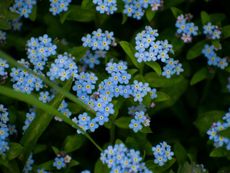 Forget-Me-Not Companions: Plants That Grow With Forget-Me-Nots
Forget-Me-Not Companions: Plants That Grow With Forget-Me-NotsThe forget-me-not is a popular and pretty late spring to early summer bloomer beloved by gardeners. The flowers don't last long, though, so you need to know what forget-me-not companions will grow well with them and provide continuous blooms. Learn more here.
By Mary Ellen Ellis
-
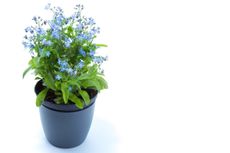 Potted Forget-Me-Not Care: Growing Forget-Me-Not Plants In Containers
Potted Forget-Me-Not Care: Growing Forget-Me-Not Plants In ContainersGrowing forget-me-not in a pot is not the typical use for this pretty little perennial, but it is an option that adds some visual interest to your container garden. Use containers if you have limited space or if you want to grow the plant indoors. Learn more here.
By Mary Ellen Ellis